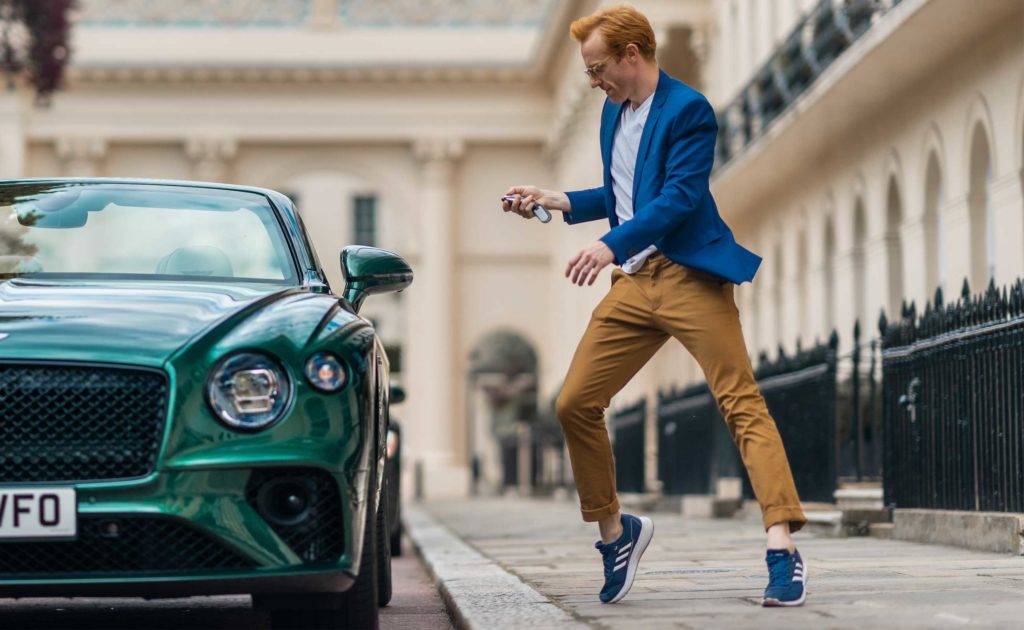
HOW USER-GENERATED CONTENT CAN SPARK MASSIVE BRAND GROWTH
User-generated content (UGC) is somewhat a buzzword in the world of brand marketing. But what do we really mean when we say ‘user-generated content’, and why does it matter?
User-generated content is a bit like digital ‘word of mouth’ marketing. User-generated content is exactly that – any content that is created and posted by users. This could be posts, photos, stories and videos created by and posted by customers (or influencers – more on this later) that either mention a brand by tagging, or that are explicitly about a brand. Or it could be in the form of online reviews and testimonials. Anything that comes from the user, rather than the brand, falls under the umbrella of user-generated content.
There are two important components to the power of user-generated content. Firstly, customers or influencers are the ones creating the content, so this means it will have a certain authenticity and relatability to it that differs from the brand’s own content.
Secondly, users are posting on their own platforms, which means the brand is being organically exposed to their audience base of genuine, and hopefully highly engaged, followers. Brands can then repurpose and leverage this ‘free’ content to their own audience, which builds brand credibility and value on both sides. And in case you weren’t convinced, 2021 stats show that user-generated content has a 4.5% higher conversion rate than brand-owned content.
So in short, you should be making UGC part of your brand marketing strategy. This really goes for all brands, not just those that consider themselves to be luxury.

Why does user-generated content work?
User-generated content can be a real game changer for brands. Without UGC, it can take a while for a consumer to warm up to and trust a brand they don’t know. But if these consumers see other people like them have used and love the brand, it builds trust far more quickly.
This is the power of user-generated content. It speeds up the process of obtaining the ‘know, like and trust’ factor in the buyer’s journey. When done right, it’s a marketing tactic that can move consumers through your funnel at unparalleled speed.
As this article discusses, it has never been more important for brands to build trust with their audiences. What’s more, 81% of consumers say they need to be able to trust a brand in order to be willing to buy from them.
The traditional way to build trust is for a brand to deliver high quality products and services that deliver on their marketing promises. But this requires people to actually get to the buying stage on the consumer journey – easier said than done in a highly competitive online landscape.
In fact, some stats show that only 7% of people are willing to buy from an unknown brand in their first interaction! Not great odds for trust-building through direct experience.
Second best to getting your products into many consumer’s hands is to springboard off the following of just one person. And this is where user generated content (and influencer marketing) comes in. A massive 79% of consumers say that user-generated content impacts their purchasing decisions. If you weren’t convinced by now, let this be the number that sways you to the power of user-generated content.
4 ways you can leverage user-generated content for your brand
1. Repurpose ‘Real People’ Content
Brands can utilise user-generated content via platforms like Instagram and Facebook by republishing posts from their followers. Some of the content created by users may not be high-quality enough to post on a brand’s main feed (especially if the brand is trying to achieve a certain aesthetic coherency). But with platforms like Instagram, brands can easily reshare a post they’ve been tagged in to their Stories, enabling them to repurpose user-generated content without impacting their own curated feed.
As we’ve mentioned before, a superb by-product of sharing UGC is an ecosystem of credibility and loyalty. The brand shows they value their followers by reposting their content, and the rest of their followers are by way encouraged to also tag the brand in order to be ‘featured’. A powerful win for relationship building that doesn’t cost a brand anything (except a little time).
2. Run Competitions
Sometimes followers may need an incentive to start tagging brands they love in their posts, and running a competition is a great way to do this. Creating a branded hashtag and encouraging users to use it along with tagging the page, with a prize as an incentive, is a potentially viral way to bring visibility to a brand. You’d be surprised by how even an inexpensive prize hamper can drive huge traction.
A caveat – make sure the prize is brand relevant. People can smell a sneaky tactic from a mile away!
3. Encourage Testimonials and Reviews
Online reviews and testimonials also count as user-generated content, and in many ways are the most potent. Online reviews have been known to make or break businesses. But as long as you are consistently delivering on your promises as a brand, there should be no reason for one bad review to drown out the good ones. This is why prompting customer reviews and feedback is one of the most important things you can do for your business.
Recent surveys have showed that 93% of customers read online reviews before buying a product, and 91% of 18-34 year olds trust online reviews as much as personal recommendations. While in a perfect world, you’d have 5-star reviews on all platforms, this is unfortunately not realistic. There’s no way for a brand to influence someone’s personal preferences and subjective perspective on its product or service, which may just simply not align with what it offers.
The best thing you can do as a brand is, firstly, to share your good reviews to your audience, and secondly, to respond to both good and bad reviews. Often people simply want to be heard and acknowledged, and once they have been are sometimes happy to edit or even take down what they’ve written.
Another version of a review is a testimonial, which gives brands a little more control over what gets put out there. If you have a customer who you feel is satisfied (or delighted) with your product or service, you may want to ask them for a testimonial, which you can then post on your website and share on your social media platforms. This is another trust-building form of user-generated content that may just tilt the scales from on-the-fence buyers to confirmed customers.
4. Harness The Power of the Influencer
Now that you understand the power of user-generated content, consider the influencer as the turbo charger you need to skyrocket potential impact of content from many, to millions.
Why? Because unlike your everyday user, influencers already have the ‘know, like and trust’ factor. They also have a sizeable and captive audience that at its height, aspires to be more like the influencer, or at the very least, trusts their advice. Take TikTok, for example. TikTok influencer marketing works because the platform revolves around users (influencers or not) sharing homemade, relatable content. This type of content bridges the gap between the influencer and their audience –the audience watches the influencer’s videos and feels close to, or allied with, the influencer.
Choosing to work with an influencer, who can easily and quickly get your brand in front of its captive audience, can really move the needle – as long as it adheres to one golden rule: authenticity.
Currently, there are 500,000 active influencers on Instagram alone. Needless to say, not all of those influencers are going to be a good fit for your brand. User discernment is at an all-time high, and this includes the way they interact with influencers. Influencers themselves are aware of this, and the best and most credible influencers certainly won’t ‘sell out’ their image by working with a brand that does not align with both their own and their audience’s values.
Fortunately these days there is an actively engaged influencer niche for just about everything. And, as a brand, this simply means finding someone who either already uses or genuinely loves your products (or ones similar to yours), and starting the working relationship from there. If you’re unsure where to start with influencer marketing, this article: A Guide to Working With Instagram Influencers, will set you on the right path.
Most influencers will charge a fee to endorse your product, yet you may find some with smaller followings who would be open to a product trade. “But doesn’t paying for someone to endorse my product make it a sell out?”, you may ask.
In 2021, absolutely not. And this once again goes back to ‘know, like and trust’. If an influencer has an authentic relationship with their audience, their followers may know that (and understand why) the influencer is being paid for an endorsement, but they trust that he or she wouldn’t do so unless it was something that would genuinely benefit their followers.
We are thankfully past the smoke and mirror era of when people didn’t actually know what an influencer does, and whether or not they get paid for something, etc. People now recognise being an influencer as a legitimate way to make a living, and there is a certain level of respect that comes with that. This is arguably one of the reasons that luxury influencer marketing has been working so well for brands in the luxury sector over the last few years.
Instagram Influencer Tiers
Another thing to note, not all influencers are created equal! Here are some new categorisations:
Mega influencer: 1m+ followers
Macro influencer: 500k – 1m followers
Mid-tier influencer: 50k – 500k followers
Micro influencer: 10k – 50k followers
Nano influencer: 1k – 10k followers
Influencer Marketing Agencies
What’s important to note here is that more followers does NOT necessarily equal a better influencer for your brand marketing. A highly engaged audience with fewer followers is far better than a huge following and low engagement.
Also, some brands will suit a more niched influencer with an intimate following to really get conversions on sales. Take luxury brand marketing, for example. Certainly not all Instagram, YouTube and TikTok influencers are going to be the right type of influencer for a luxury brand. Luxury influencer marketing requires a nuanced approach, and this is where working with a luxury influencer marketing agency can really help. Agencies like ours strategically partner premium brands and influencers in order to create the most synergy and impact for both parties.
As you can see, you can start leveraging the power of user-generated content with zero budget to start. But if you are a brand with budget, channelling it towards influencer marketing may very well give you the ROI you are looking for.
Are you looking to move forward with an influencer marketing campaign? See how we can help.


